Many intersections are secured with red-light cameras to promote road safety. However, some argue that they create a road safety problem and are actually a cause for more crashes. This article deals with scientific research on this topic and a verdict on this issue.
Road safety at intersections
Due to crossing traffic and thus the nature and impact of a potential crash, intersections are risky locations from a road safety perspective. Roughly a quarter of all crashes (*1) and 44% of all traffic deaths and serious injuries (*2) occur at intersections. These figures are even more remarkable if you consider that intersections take up a relatively small part of the total road length travelled during a given trip. It also explains why many intersections are converted into roundabouts as part of road safety focussed infrastructure adaptations. However, such changes are expensive and often not feasible due to existing buildings or land ownership. Roundabouts take more space than traditional intersections. Improved road safety is caused by the fact that roundabouts force vehicles to slow down and change the potential crash impact angle. Both these factors reduce the risk of serious crashes. Research shows that a conversion to a roundabout reduces the number of serious injuries and deaths by 46% (*3).
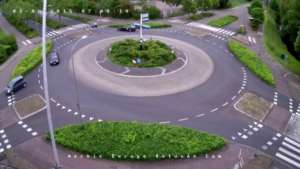
Almost three quarters of intersection crashes (*2) occur in urban areas. However, in rural areas and other roads where vehicle speeds are higher, the consequences intersection crashes can be extremely severe.
Chances of serious injury or death increase dramatically with vehicle speeds above 50 km/h. This applies in particular to vulnerable road users.
The IRAP Road Safety Tool Kit (*4) reports various intersection crash types, including:
– Collision between oncoming vehicles, particularly when turning across traffic
– Right-angle collisions, where neither vehicle is turning (often at high speed)
– Right-angle or side-swipe collisions where one or more vehicles are turning
– Rear-end crashes
IRAP specifies the following causes of intersection crashes:
– Inadequate sight distance to on-coming vehicle
– High approach speeds
– Lack of intersection visibility (road users aware of upcoming intersection)
– Lack of gaps in traffic
– Complex intersection layout
– Poor road surface condition
Due to the above it makes sense to specifically focus on intersection safety as part of a balanced road safety strategy. Besides roundabouts, intersection safety can be improved by traffic and warning lights, signage, speed humps, plateaus and rumble strips. Most of these measures focus on lowering speeds, regulating traffic and increasing attention levels.
Intersection safety cameras
Red-light cameras (RLCs) are also a frequent safety measure for signalised intersections. They are less controversial than speed cameras since everyone agrees that red-light negation is extremely dangerous. Many drivers do not see such risks with limited speeding. In many countries red-light cameras are equipped with integrated speed cameras. This means speeding up in order to ‘just make it’ through a green or yellow light will also be punished. Depending on the jurisdiction, speeding and ignoring a red light simultaneously, could result in a double fine. On the other hand, many drivers claim that red-light cameras are bad for road safety. They believe that they actually increase the number of intersection crashes. Is this claim true?
Red-light camera effect and benefit studies
A wide range of studies were conducted to evaluate the merits of RLCs. Summaries of these studies are listed below. The links to the full content studies are listed under sources at the bottom of this article.
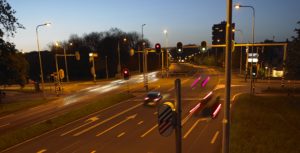
Insurance Institute of Highway Safety
The Insurance Institute of Highway Safety (IIHS) (*5) reports that camera enforcement programs were associated with a statistically significant reduction in the city-wide rate of fatal red light running crashes and also with a smaller but still significant reduction in the rate of all fatal crashes at signalized intersections. RLC programs in 79 large U.S. cities saved nearly 1,300 lives through 2014, researchers from the Insurance Institute for Highway Safety have found. Shutting down such programs costs lives. The rate of fatal red-light-running crashes shot up 30 percent in cities that turned off RLCs.
United States Federal Highway Administration
A Federal Highway Administration (FHWA) study on the impact of RLCs (*6) concludes: this economic analysis represents the first attempt in the known literature to combine the positive effects of right-angle crash reductions with the negative effects of rear end crash increases and identify factors that might further enhance the effects of RLC systems. The following primary conclusions are based on these current analyses: Even though the positive effects on angle crashes of RLC systems is partially offset by negative effects related to increases in rear end crashes, there is still a modest to moderate economic benefit of between $39,000 and $50,000 per treated site year. Even if modest, this economic benefit is important. In many instances today, the RLC systems pay for themselves through red-light-running fines generated. However, in many jurisdictions, this differs from most safety treatments where there are installation, maintenance, and other costs that must be weighed against the treatment benefits. The modest benefit per site is an average over all sites. As the analysis of factors showed, this benefit can be increased through careful selection of the sites (e.g., sites with a high ratio of right-angle to rear end crashes as compared to other potential treatment sites) and program design (e.g. high publicity).
Monash University
The Monash University Accident Research Centre (*7) studied of the effects of red-light cameras at 77 intersections in Victoria, Australia. It was estimated that 17 serious or fatal crashes per year and 39 minor injury crashes were be prevented at these intersections. This represented crash cost savings to the community of roughly AUD 8M or EUR 5.2M. When only the crashes involving vehicles travelling form the approach intersection leg where the camera was placed are considered, the estimated casualty crash reduction was 47%. When crashes involving vehicles from all approaches are compared, the estimated casualty crash reduction was 26%. They also calculated a 44% reduction in right angle and right turn against crashes. This type of collisions is targeted in particular by red light enforcement.
In this study a combination of speed and red-light enforcement in one fixed camera system was used. This was rather unique and had not been previously evaluated. Based on the outcomes of this evaluation, continued and expanded use of combined fixed red-light and speed cameras in Victoria is expected to improve driver safety, save lives and reduce crash related costs.
Cochrane Library
On the basis of 10 controlled before-after studies from Australia, Singapore and the USA, a Cochrane Library report (*8) concluded that red-light cameras are effective in reducing total casualty crashes. However, the evidence is less conclusive on total collisions, specific casualty collision types and violations. Some reductions achieved could be explained by the play of chance. Most evaluations did not adjust for regression to the mean (RTM) or spill over, affecting their accuracy.
Journal: Traffic Injury Prevention
A study in the magazine Traffic Injury Prevention (*9) reviewed and evaluated available evidence in the international literature regarding the effectiveness of cameras to reduce both red light violations and crashes. Camera enforcement generally reduces violations by an estimated 40-50%. In terms of crash effects, most studies contain methodological flaws that, to varying degrees, either overestimate (failure to adjust for regression to the mean) or underestimate (comparison with nearby signalized intersections affected by cameras) crash effects. Mindful of these limitations, the research generally indicates that camera enforcement can significantly reduce injury crashes at signalized intersections. This applies in particular to right-angle injury crashes. Most studies reported increases in rear-end crashes following camera installation. Taken together the studies indicate that, overall, injury crashes, including rear-end collisions, were reduced by 25-30% as a result of red-light camera enforcement.
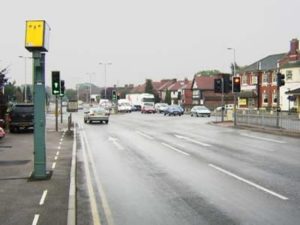
Opposition to red-light enforcement cameras
Many pro-motorist sites claim red-light cameras are dangerous (*10, 11) and that they actually increase the number of crashes. Moreover, for the United States these sites claim that enforcement cameras are used to fill government coffers through fine collection and that their road safety benefits are quite limited. Some red-light effect studies indeed indicate that there may be a slight increase in rear-end collisions with the use of red-light cameras. However, this pales compared to the reduction in the number of right-angle and other high impact crashes that cause considerably more casualties and severe injuries.
Overall intersection safety solutions
It is obvious that improving road safety at signalised intersections by only installing red light cameras has limited effect. It is important to look at each road crossing separately and look at a wide range of potential intersection road safety measures. These include infrastructure (e.g. roundabouts, speed humps, rumble strips, plateaus, mirrors), signalisation, signage (signs, flashing lights, count-down timers), speed reduction and publicity.
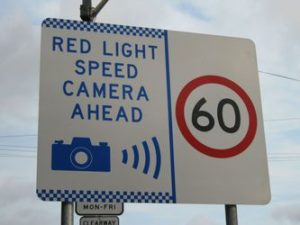
Signage indicating red-light and speed cameras in AustraliaSpecial attention should be given to vulnerable road users, since they run the highest risk at intersections, especially with red-light running by cars and other heavy vehicles. The decision to install red-light cameras with or without integrated full-time speed enforcement at an intersection should only be taken based on a thorough analysis of the road safety issues at that specific intersection. Arguments that red-light cameras cause more crashes and are thus are counterproductive to road safety are not supported by academic research and can be considered as ‘fake news’.
Sources
Insurance Institute of Highway Safety : http://www.iihs.org/iihs/topics/t/roadway-and-environment/fatalityfacts/roadway-and-environment
Netherlands Institute of Road Safety Research: https://www.swov.nl/feiten-cijfers/factsheet/kruispunttypen
Netherlands Institute of Road Safety Research: https://www.swov.nl/feiten-cijfers/factsheet/rotondes
International Road Assessment Programme: http://toolkit.irap.org/default.asp?page=crashtype&id=8
Insurance Institute of Highway Safety: http://www.iihs.org/iihs/news/desktopnews/turning-off-red-light-cameras-costs-lives-new-research-shows
Federal Highway Administration: https://www.fhwa.dot.gov/publications/research/safety/05049/
Monash University Accident Research Centre: http://www.monash.edu.au/miri/research/reports/muarc307.pdf
Cochrane Library: http://onlinelibrary.wiley.com/doi/10.1002/14651858.CD003862.pub2/abstract
Traffic Injury Prevention: http://www.tandfonline.com/doi/abs/10.1080/15389580309858
The News Wheel: http://thenewswheel.com/dangerous-effects-do-red-light-cameras-cause-traffic-accidents/
National Motorists Association: https://www.motorists.org/blog/red-light-cameras-increase-accidents-5-studies-that-prove-it/
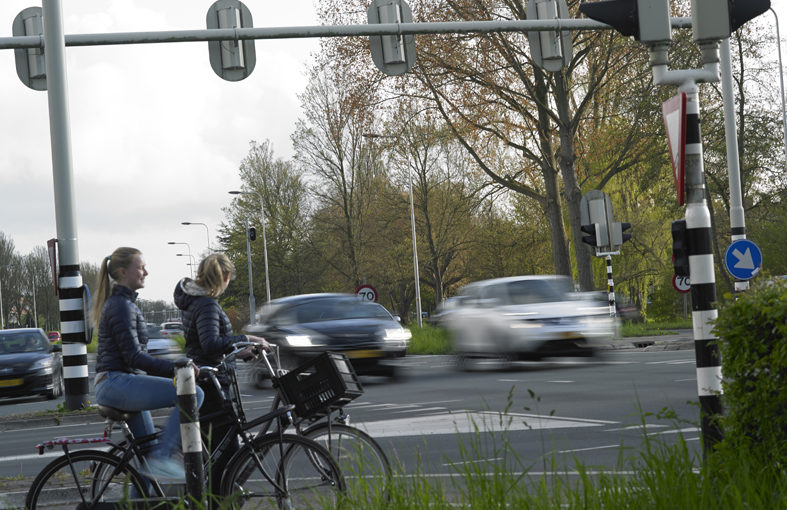
Comments are closed.